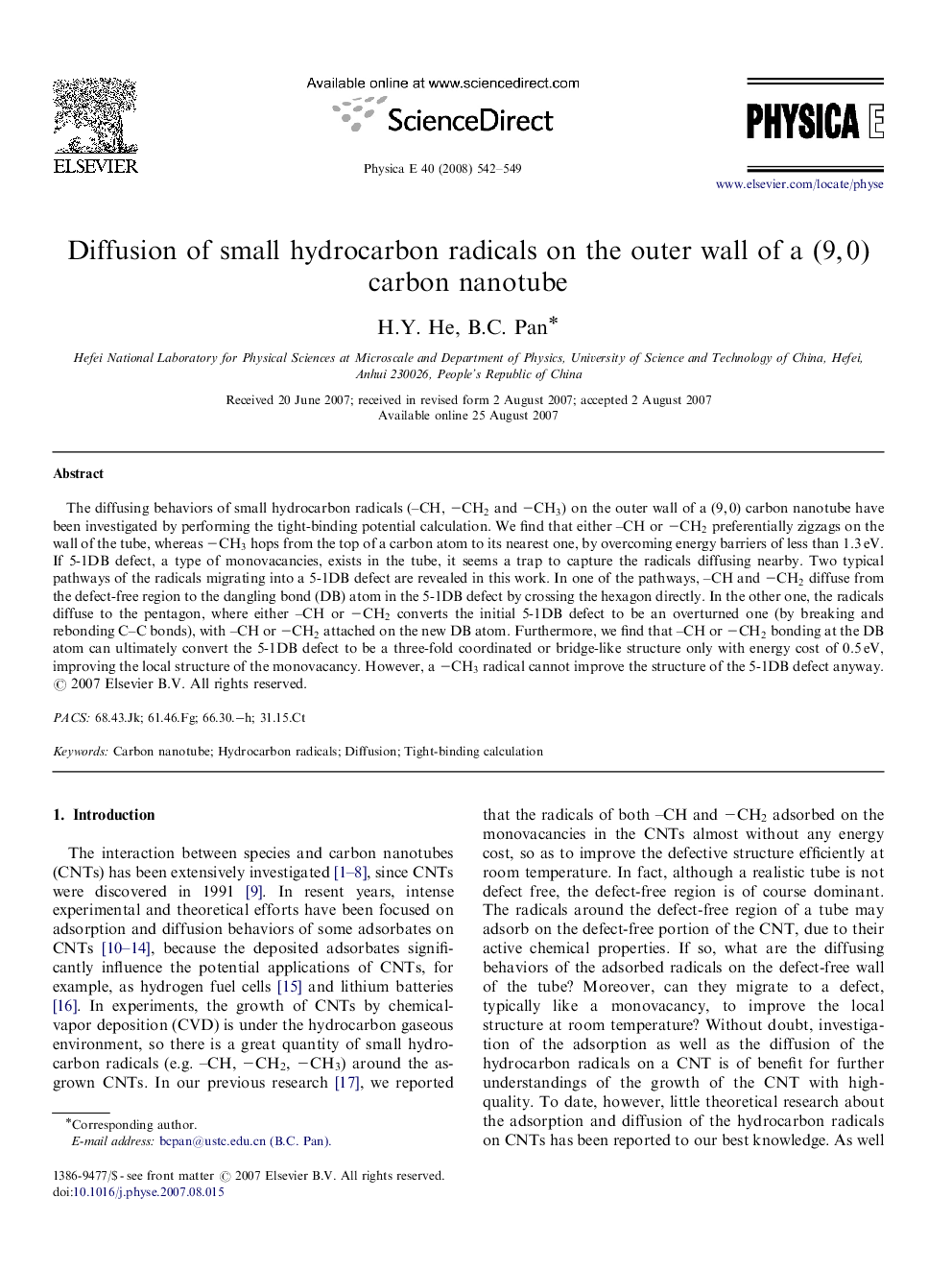| Article ID | Journal | Published Year | Pages | File Type |
|---|---|---|---|---|
| 1546567 | Physica E: Low-dimensional Systems and Nanostructures | 2008 | 8 Pages |
The diffusing behaviors of small hydrocarbon radicals (–CH, –CH2–CH2 and –CH3–CH3) on the outer wall of a (9,0)(9,0) carbon nanotube have been investigated by performing the tight-binding potential calculation. We find that either –CH or –CH2–CH2 preferentially zigzags on the wall of the tube, whereas –CH3–CH3 hops from the top of a carbon atom to its nearest one, by overcoming energy barriers of less than 1.3 eV. If 5-1DB defect, a type of monovacancies, exists in the tube, it seems a trap to capture the radicals diffusing nearby. Two typical pathways of the radicals migrating into a 5-1DB defect are revealed in this work. In one of the pathways, –CH and –CH2–CH2 diffuse from the defect-free region to the dangling bond (DB) atom in the 5-1DB defect by crossing the hexagon directly. In the other one, the radicals diffuse to the pentagon, where either –CH or –CH2–CH2 converts the initial 5-1DB defect to be an overturned one (by breaking and rebonding C–C bonds), with –CH or –CH2–CH2 attached on the new DB atom. Furthermore, we find that –CH or –CH2–CH2 bonding at the DB atom can ultimately convert the 5-1DB defect to be a three-fold coordinated or bridge-like structure only with energy cost of 0.5 eV, improving the local structure of the monovacancy. However, a –CH3–CH3 radical cannot improve the structure of the 5-1DB defect anyway.
